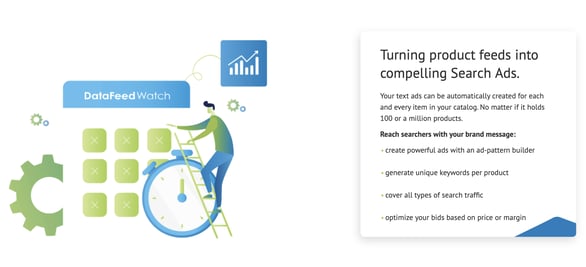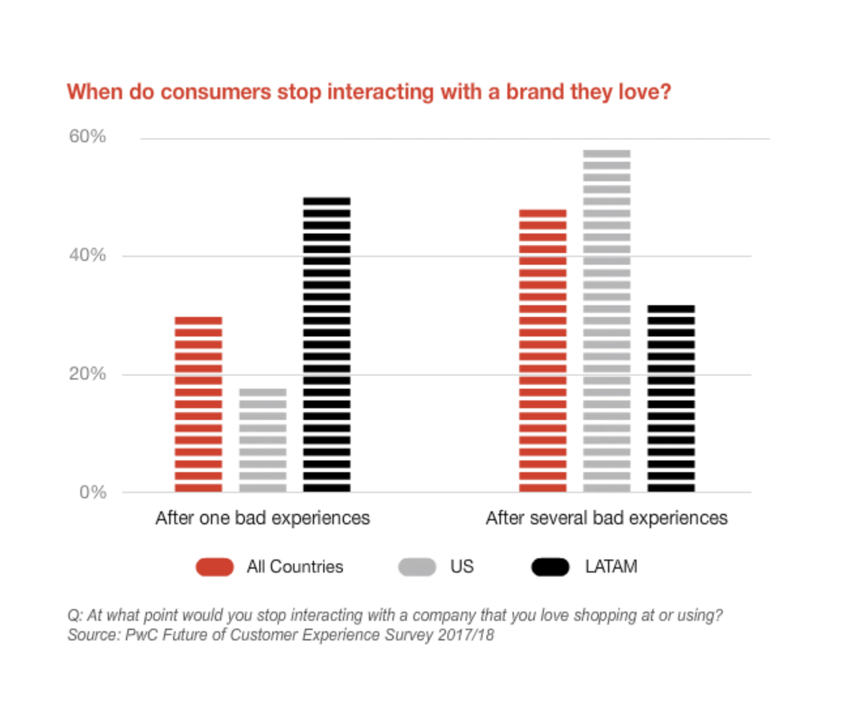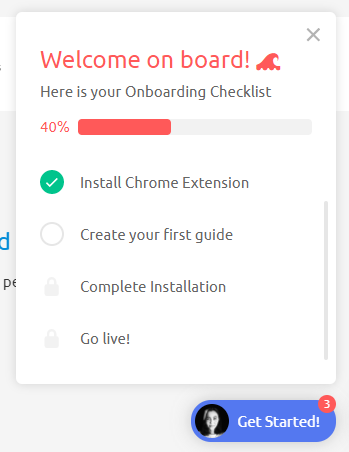Most e-commerce owners spend too much time, energy, and money on attracting new customers and forget how valuable existing customers are. Focusing on retaining active customers and increasing their lifetime value (CLV) is actually more profitable for e-commerce businesses.
The longer customers use your products, the more they will buy from your store, which will make their long-term relationship with your brand more valuable.
In this article, we will cover what customer lifetime value is, how you can calculate it, and tips to boost your CLV. Without further ado, let's begin!
What is Customer Lifetime Value (CLV)?
Customer lifetime value (CLV) is the net worth or profit from a single customer a business can expect to bring in during its entire relationship with the company. CLV is one of the key metrics to measure customer loyalty because it indicates that the value you propose satisfies your current customers and increases growth.
Knowing CLV also helps businesses improve customer experiences, which ultimately attracts new customers and turns one-time customers into fans of your product.
Why is CLV Important for Your E-commerce Business?
Let's look at why CLV is crucial for e-commerce businesses. Basically, we can group the benefits of tracking CLV into three categories:
1- Helps You Adjust Strategies
Customer lifetime value (CLV) helps you make financial predictions about marketing and sales. Because it's directly related to the amount of profit you can expect from a single customer before they churn, it gives a great insight into customer acquisition cost and how to keep it at a minimum.
CLV affects how frequently you're selling your product to a customer and persuades them to spend more with each purchase. Therefore, it will be easier for you to make decisions for your marketing strategy.
2- Improves Customer Relationships
Customer-first approach is especially crucial for any eCommerce business. One negative experience can create a domino effect and make you lose many profitable customers.
After all, one rotten apple is enough to spoil the whole barrel.
Therefore, it is crucial to invest in every stage of the customer journey and identify touchpoints. Creating profitable long-term customer relationships begins with taking proactive steps and anticipating any problems a customer might encounter.
Keeping your focus on CLV helps you understand what drives existing customers to spend more money on your product, allowing you to channel that data into acquiring new customers. In addition, higher CLV suggests higher customer satisfaction. This is because you pay attention to your customer base's needs and provide value at the right place and time.
Compare your previous CLV data with the present to see the breaks in your funnel and double down on the areas that you see long-term growth.
Sending anniversary emails, connecting with your audience across different channels on a regular basis, and creating personalized campaigns go the extra mile in bonding with your active customers.
3- Increases Marketing ROI
Prioritizing customer retention over acquisition has become more important for E-commerce companies over the last year. This is thanks to CLV.
"How?" You may ask.
The longer a customer stays with you, the more the customer spends. By increasing purchase frequency, you can boost your marketing return on investment (ROI). You will not spend extra money on advertising or acquiring new customers because your loyal customers will cut the cost to drive sales by purchasing more from you.
How to Calculate CLV?
Before we can calculate the average customer lifetime value, we must calculate other metrics:
- Average Order Value (AOV): calculated by dividing your company's total revenue by the total number of purchases made within a time period
- Average Purchase Frequency Rate (APF): calculated by dividing the total number of purchases by the number of actual customers who made purchases during that period of time
- Average Customer Lifespan (ACL): calculated by dividing the number of years the customers continued to make purchases by the total number of customers
Now that you have the exact numbers, we can calculate your customer lifetime value. Here's a simple formula:
CLV = AOV X APF X ACL
Let's put it into perspective to see the formula in action. Suppose you have an average of $100 order value. The frequency of the customer in a year is 4 purchases and their average customer lifespan is 3 years.
Therefore, your CLV would be:
100 x 4 x 3 = $1200
5 Tips to Increase Customer Lifetime Value in E-commerce
1- Offer A Personalized Experience
One of the most effective ways to improve customer lifetime value for e-commerce companies is by constantly boosting customer engagement with a personalized experience. This is where content creation and marketing comes into play.
It is impossible to create a blog post or video that will appeal to every customer out there. Some customers will be aware of your business, while others will look for information about your niche. In other words, you cannot sell to those purposefully searching for valuable information. Are you going to disregard them, though?
I'll answer that for you: No.
Instead, you will create customer segments and allocate your time and effort to publish content they are actively looking for. If the customer wants to know more about your niche, then you can create "How to" guides or share statistics. This type of content provides value and does not require the customer to spend their money, so it encourages them to spend more time on your website.
And exposes them to your products.
If the customer is already familiar with your industry and services, you can provide in-depth analysis, review competitors, or provide tips to make their experience better and simpler. Targeting each segment with paid search ads can also help bring your products in front of more customers who are ready to buy.
 Source: DataFeedWatch
Source: DataFeedWatch
Paid advertisement, when done right, increases your conversion rates. These ads also help you keep your marketing budget in check.
All in all, the customer decides whether the value you propose is for them or not. Show them that you listen to their needs and understand their wishes. Make your product stand out by addressing their questions and concerns with personalized content.
2- Simplify the Onboarding Process
Customer retention rate is one of the key indicators that determine whether your business sinks or swims. The overall impact your product has on the customer can also inform you about the customer service, website UX, checkout method, and obviously, customer onboarding.
According to a study by PWC, 32% of all customers would stop doing business with a company after a bad experience. 59% of the customers would walk away permanently after several bad experiences.
 Source: PWC
Source: PWC
That is why it is crucial for eCommerce companies to onboard their customers as smoothly as possible. Since customers are required to perform certain actions to complete their purchases, it is impossible to imagine an e-commerce onboarding sequence without interactive elements.
So how can you create a great onboarding experience for your customers?
First of all, onboarding must be short and simple. If it is too complex and takes too much time to complete, the customers will lose interest or get frustrated. Every extra step you add to your onboarding creates friction and decreases the customer's interest.
An onboarding checklist becomes a lifesaver in this situation. You can add the necessary steps the customer must complete before setting up their account, payment information, and making a purchase. As they complete each task, they can tick them off and follow their progress with a progress bar.

Source: UserGuiding
Simple and interactive onboarding simplifies the customer's experience and encourages them to engage with your product and website. You can also tailor the process based on buyer personas and create multiple checklists based on their behavior.
Following up with a satisfaction survey, such as NPS, can also improve their onboarding experience.
3- Create Loyalty Programs
A win-win situation is always ideal for customers, and e-commerce companies that tap into that get their rewards with increasing growth and revenue. Loyalty programs are gaining popularity really fast, and it is never too late to try them out for yourself.
A customer loyalty program rewards customers and offers incentives who regularly interact with or make purchases from a brand. It's a retention strategy that aims to drive additional purchases from customers. E-commerce stores can encourage their customers to join their programs and offer rewards, such as discounts, point rewards to get benefits, free shipping, or loyalty cards.
Refer-a-friend method also works well and boosts word of mouth advertising. For every friend that makes a purchase, the customer can get bonus points or other perks. Adding an expiration date can also create a sense of urgency and prompt using their rewards to make more purchases.
Implementing a brand ambassador program allows you to commission user-generated content from your consumers that you can repurpose in future campaigns. Ambassadors are rewarded for taking part in marketing tasks and creating content. This helps build long-term, mutually beneficial relationships.
Attracting new customers is five times more expensive than retaining existing ones, so introducing a loyalty program can help save up money and time.
4- Keep Engaging with Email Marketing
This tip overlaps with providing personalized experiences for your customers, but here's a catch: Email marketing campaigns have different rules.
If customers don't recognize you, they won't buy from you.
Email campaigns are great for engaging active customers and re-targeting inactive customers. These campaigns also help you increase your CLV.
Sending monthly newsletters about your business, upcoming campaigns, and showing behind the scenes of your company (like packaging orders for shipment) help customers to connect with your brand. Remember that your customers already receive lots of promotional emails, so you need to make sure that you give value beyond their purchase experience. To maximize the effectiveness of your email marketing efforts, consider utilizing the best outbound email automation tools available. These tools can streamline your campaigns, ensuring timely and personalized communication with your customers while saving you valuable time and effort.

Source: Pinterest
5- Detect Pain Points and Provide Solution Roadmaps
Taking customer feedback to identify what performs poorly and doubling down on what satisfies the customer is a good way to ensure high and sustainable CLV. Customer satisfaction surveys or Net Promoter Surveys (NPS) handle collecting feedback easily. You can gain insight into your frequent problems and recurring issues and take actionable steps to prevent them.
These surveys also provide tips to take measures before a problem occurs, so you can prevent getting customers frustrated. Reaching out to customers and offering a step-by-solution for their problem turns a negative experience into a positive one and you can fix the problems as quickly as possible.
Conclusion
Putting customers first always pays off. Asking them for feedback and taking immediate action to address their problems or rewarding them for their long-term commitment shows how much they mean to your business and establishes a deeper connection.
Focusing on retaining your existing and loyal customers cuts down your expenses in the long run and increases your overall marketing ROI. The customers will be more likely to spend more on your products instead of going to your competitors, and it spreads awareness about your brand. If you're looking for a way to boost your CLV, the tips we mentioned can help grow your business faster.
